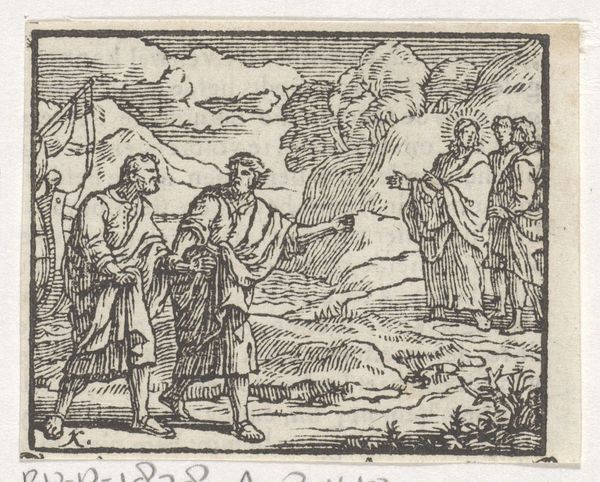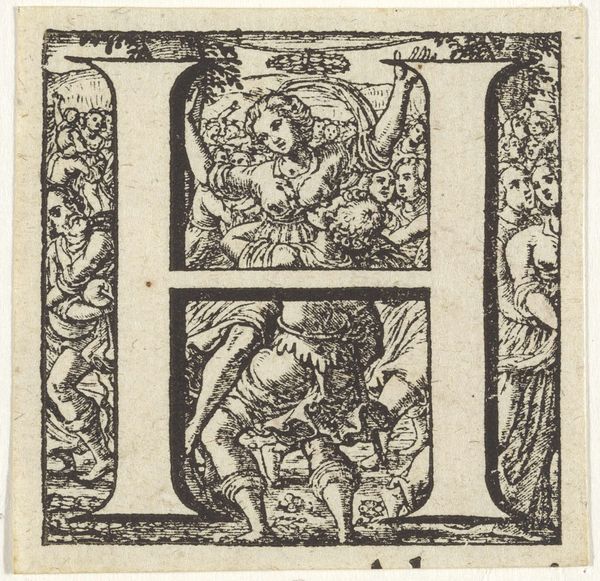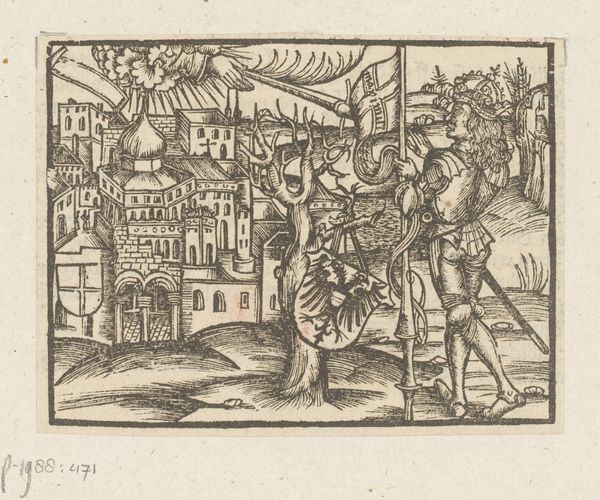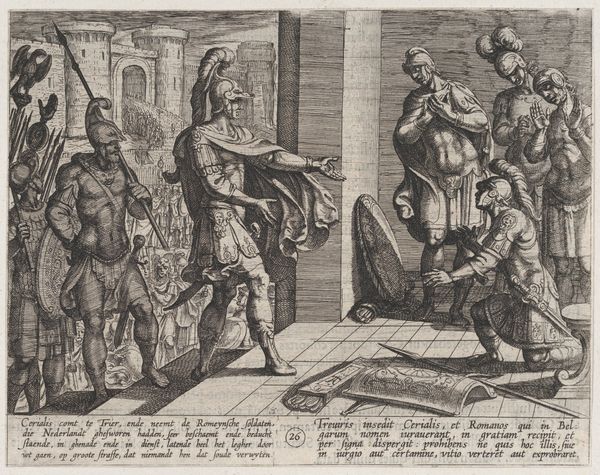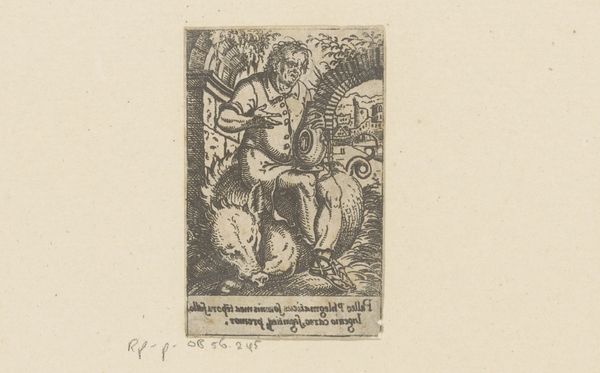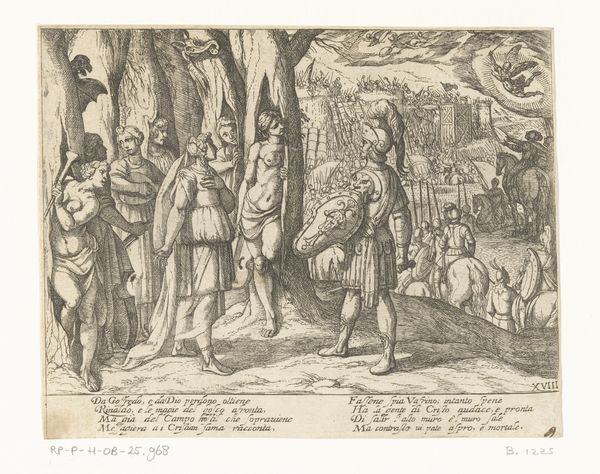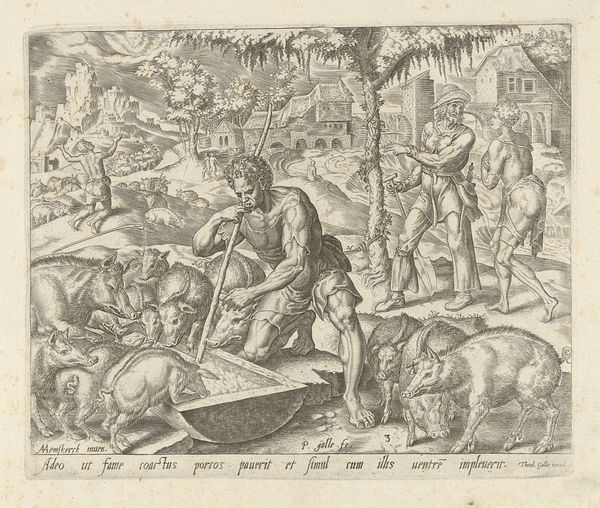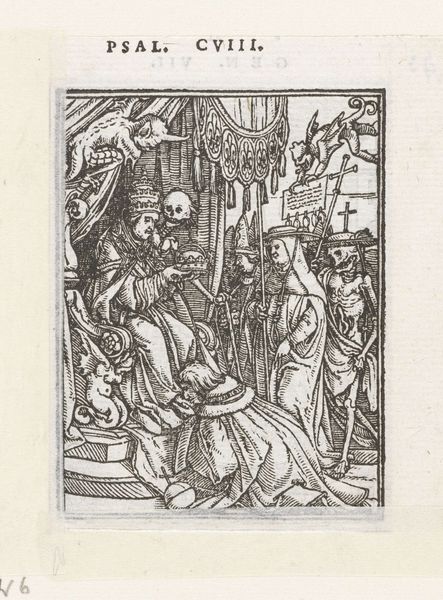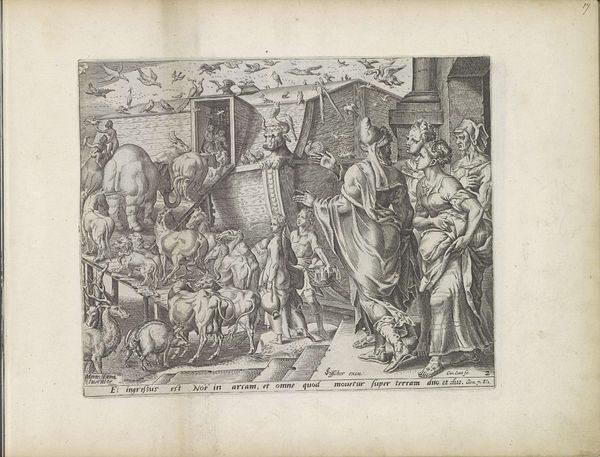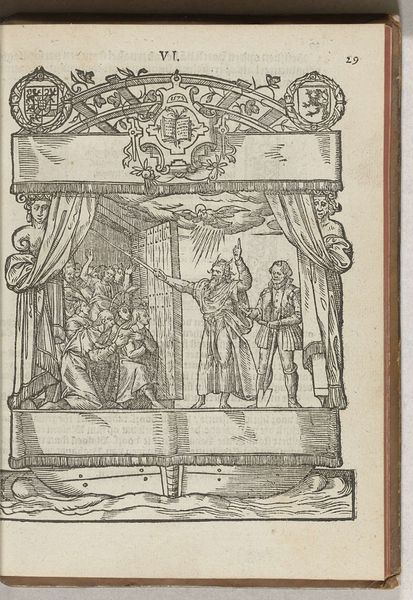
print, woodcut
#
narrative-art
# print
#
old engraving style
#
figuration
#
woodcut
#
line
#
history-painting
#
northern-renaissance
Dimensions: height 50 mm, width 70 mm
Copyright: Rijks Museum: Open Domain
Editor: So this print, "Joshua laat vijf Amoritische koningen ophangen," from around 1530, is an anonymous woodcut in the Rijksmuseum's collection. It depicts the hanging of five kings. I find it striking how the stark lines and the medium itself amplify the violence of the scene. What elements stand out to you? Curator: The most significant element, to me, is the woodcut itself. Consider the process: a block of wood painstakingly carved away to produce this image. It wasn't mere illustration; this print offered a method for wide distribution of a biblical narrative, shaped by the available resources. How does the medium's accessibility influence your understanding? Editor: I hadn't thought of it like that. I suppose that the roughness makes it feel more like a broadly distributed propaganda piece than high art. It connects the historical subject matter to contemporary social contexts... Curator: Exactly. The act of repetitive printing is also a form of labor, closely related to artisanry, and underscores how visual culture circulated information and ideology. Do you notice any ways the materiality informs our understanding of power dynamics? Editor: The very act of producing multiples meant this image could be widely disseminated, thus amplifying Joshua's power and dominance throughout society at large. I appreciate you helping me see it not just as an image, but as an object with a complex story about its creation and circulation. Curator: And I find that reflecting on production, materials, and distribution changes my appreciation for this kind of print. Considering the labour, time and socio-political forces, these historical works speak in an accessible visual language we often overlook.
Comments
No comments
Be the first to comment and join the conversation on the ultimate creative platform.
